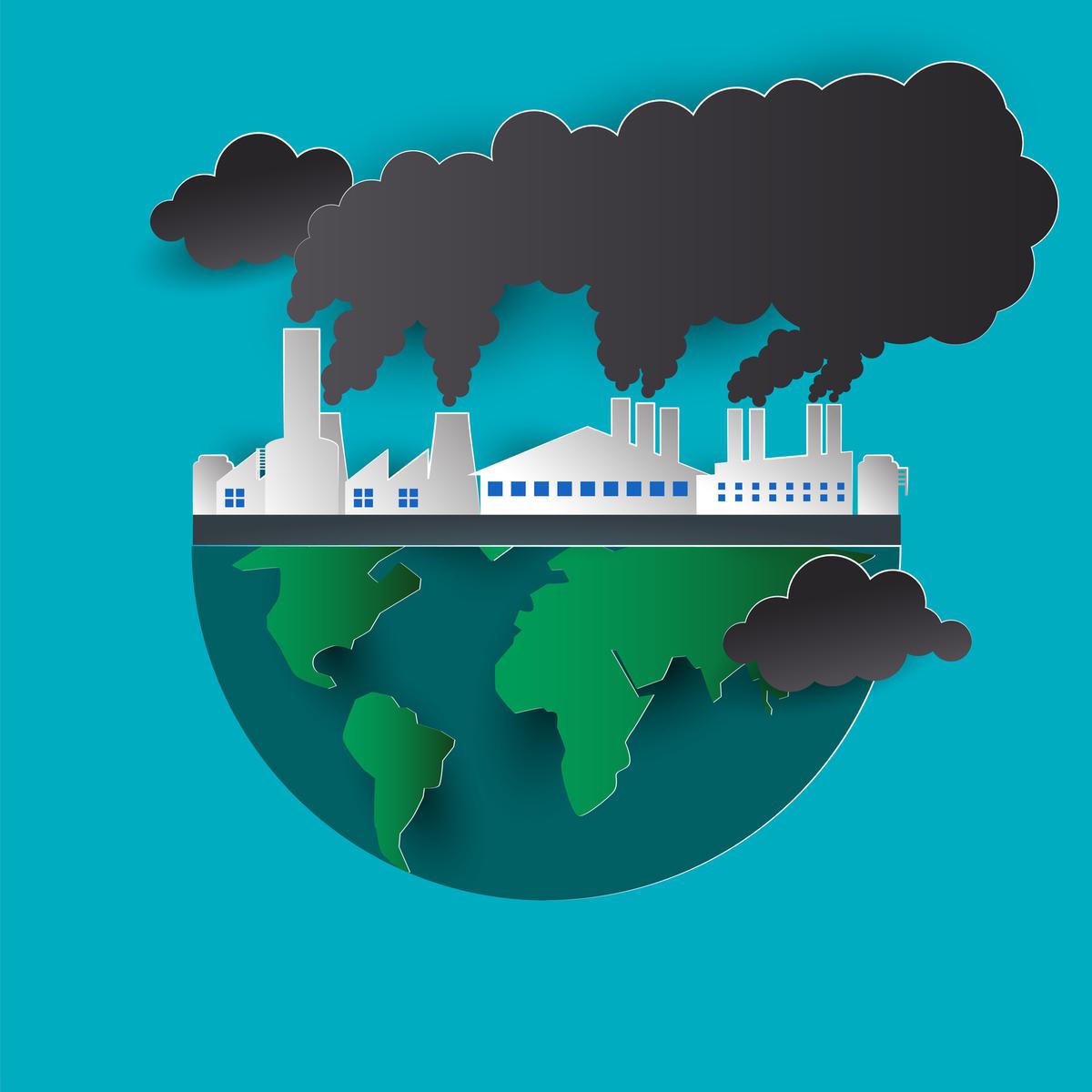Takeaways from the latest IPCC report
Context
-
In its latest assessment report, the Intergovernmental Panel on Climate Change (IPCC) has laid out several scenarios on the steps that ought to be taken to keep temperatures below 2°C.
-
It warned that even temporarily exceeding the warming level of 1.5°C over the next two decades would mean additional severe impact, some irreversible.
Key Takeaways from the IPCC report
- Total net anthropogenic GHG (greenhouse gas) emissions have continued to rise from 2010–2019, as have cumulative net CO2 emissions since 1850.
- Average annual GHG emissions during 2010-2019 were higher than in any previous decade, but the rate of growth between 2010 and 2019 was lower than that between 2000 and 2009. By 2019, the largest growth in absolute emissions occurred in carbon dioxide from fossil fuels and industry followed by methane.

Photo Credit: Getty Images/iStockphoto - The per-unit costs of several low-emission technologies have fallen continuously since 2010, however innovation has lagged in developing countries due to weak enabling conditions.
- Even if countries adhered to their promises towards reducing emissions, called Nationally Determined Contributions, warming will still exceed 1.5°C during the 21st century. Keeping warming below 2°C would then rely on a rapid acceleration of mitigation efforts after 2030.
- Average annual GHG emissions during 2010-2019 were higher than in any previous decade, but the rate of growth between 2010 and 2019 was lower than that between 2000 and 2009. By 2019, the largest growth in absolute emissions occurred in carbon dioxide from fossil fuels and industry followed by methane.
- Tracked financial flows were still falling short of the levels needed to achieve mitigation goals across all sectors and regions.
- The challenge of closing gaps was largest in developing countries as a whole. Increasing financial flows can be supported by clear policy choices and signals from governments and the international community, it said.
- According to the scientists, limiting warming to around 1.5°C requires global greenhouse gas emissions to peak before 2025 at the latest and be reduced by 43% by 2030; at the same time, methane would also need to be reduced by about a third.
- Even if this happened, it is almost inevitable that this ceiling would be temporarily breached but, with appropriate action, it could again dip by the end of the century.
- The global temperature will stabilise when carbon dioxide emissions reach net zero.
- For 1.5°C, this meant achieving net zero carbon dioxide emissions globally in the early 2050s; for 2°C, it is in the early 2070s.
- Even limiting warming to around 2°C would still require global greenhouse gas emissions to peak before 2025 at the latest and be reduced by a quarter by 2030, the report stressed.
What are the implications of this report for India?
- The report’s warning against opening new coal plants is of relevance to India.
- The panel finds that all coal-fired power plants, without the technology to capture and store carbon (CCS), would need to be shuttered by 2050 if the world aspired to limit global temperature rise to 1.5°C.
- According to the Central Electricity Authority, India had about 211 GW of operational coal-fired power plants — roughly 10% of global capacity.
- As per Global Energy Monitor data, another 31 GW was being constructed and about 24 GW in various pre-construction phases.
- None of the existing under construction coal-fired power plants in India have CCS facilities.
- India has committed to a net-zero year, or when it would cease to be a net carbon dioxide emitter, of 2070 and has defined a pathway to transition to renewable energy sources but also insisted on its right to coal use given its developmental needs as well underlining that the historical responsibility of climate change from fossil fuel rested with the developed countries, who needed to shoulder much of the mitigating burden.
- The Centre has “welcomed” the report and said it recognises India’s position that developed countries must do more to mitigate climate change.
Back to Basics
How is this report prepared?
- Scientists from around the world including India are part of the Working Group III of the IPCC.
- They analyse the various interventions that can be made to ensure that temperature rise by the end of the century is minimal.
- The group does this by assessing the most credible, updated literature on the scientific, technological, environmental, economic and social aspects of mitigating the impact of climate change.
- This specific group studies social developments, such as decisions taken at the annual Conference of Parties (COP), progress on clean energy technologies and availability of finance.
- Placing the data in the context of climate science, the scientists analyse the role played by various groups such as forest communities, indigenous tribes and businesses, in addressing climate change and finally recommend steps that must be taken over three periods: until 2030, until 2050 and until 2100, on what needs to be done to limit temperature rise.
- A key part of the report, called the Summary for Policymakers, was approved by 195 member-governments of the IPCC, through a virtual approval session that started on March 21.
- The latest report is the third instalment of the IPCC’s Sixth Assessment Report (AR6), which will be completed this year.
Reference:
Visit Abhiyan PEDIA (One of the Most Followed / Recommended) for UPSC Revisions: Click Here
IAS Abhiyan is now on Telegram: Click on the Below link to Join our Channels to stay Updated
IAS Abhiyan Official: Click Here to Join
For UPSC Mains Value Edition (Facts, Quotes, Best Practices, Case Studies): Click Here to Join
